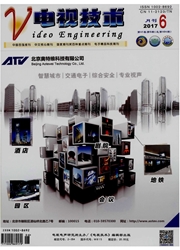

 中文摘要:
中文摘要:
这份报纸处理能在实时产生精确稠密的不同地图的一个新奇立体声算法。算法在一个扫描行优化框架以内采用有效跨 based 变量支持聚集策略。而非直接匹配紧张,适应支持聚集的使用允许精确处理弱粗糙的区域以及深度断绝。为了改进不同,与全球推理结果,我们再用形式表示在整个 2D 图象区域上的树结构上的精力函数,与单个扫描行的动态编程对比。由使用 intra 扫描行和内部扫描行的优化,当维持高计算的效率时,算法减少典型 streaking 人工制品。试验性的结果在 Middlebury 立体声数据集上被评估,证明我们的途径在为所有即时途径的最好之中。我们与 CUDA 建筑学在一张商品图形卡片上实现算法,在为有 384 的分辨率的典型立体声对的大约 35 fames/s 跑 ?? à
 英文摘要:
英文摘要:
This paper deals with a novel stereo algorithm that can generate accurate dense disparity maps in real time. The algorithm employs an effective cross-based variable support aggregation strategy within a scanline optimization framework. Rather than matching intensities directly, the use of adaptive support aggregation allows for precisely handling the weak textured regions as well as depth discontinuities. To improve the disparity results with global reasoning, we reformulate the energy function on a tree structure over the whole 2D image area, as opposed to dynamic programming of individual scanlines. By applying both intra- and inter-scanline optimizations, the algorithm reduces the typical 'streaking' artifact while maintaining high computational efficiency. The experimental results are evaluated on the Middlebury stereo dataset, showing that our approach is among the best for all real-time approaches. We implement the algorithm on a commodity graphics card with CUDA architecture, running at about 35 fames/s for a typical stereo pair with a resolution of 384×288 and 16 disparity levels.
 同期刊论文项目
同期刊论文项目
 同项目期刊论文
同项目期刊论文
 期刊信息
期刊信息
